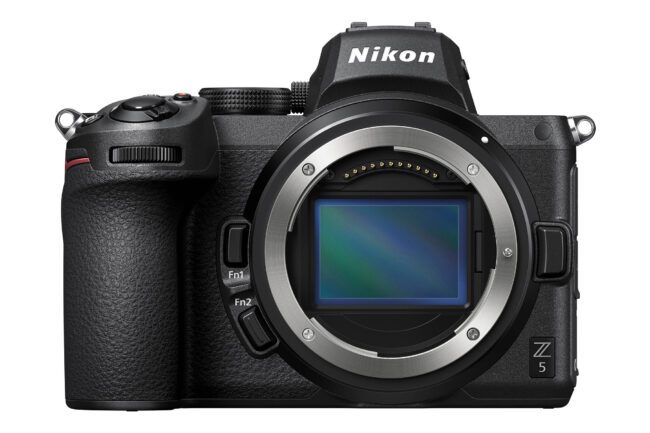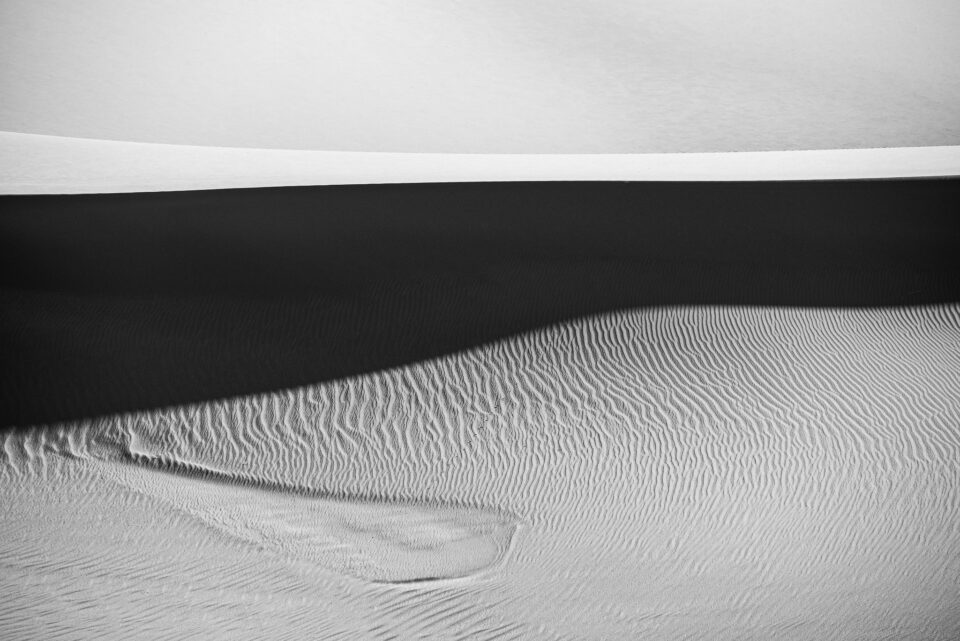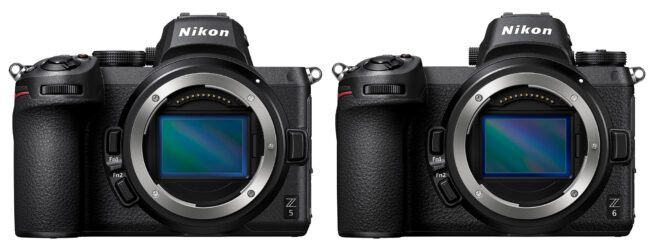The Nikon Z5 is a budget-friendly full-frame mirrorless camera that was introduced in July of 2020. Despite its $1,399 retail price tag (at the time of introduction), the Z5 is a very capable camera that has most of the functionality of its higher-end sibling, the Nikon Z6. Sporting a 24 MP CMOS sensor, EXPEED 6 image processor, 273-point autofocus system, dual UHS-II SD memory card slots, a lightweight magnesium alloy body, and a robust list of camera features, the Nikon Z5 has a lot to like about. I had a chance to test the Nikon Z5 for the past three months along with a few new Z-mount Nikon lenses, so I decided to finally publish my assessment of this camera.

Due to the COVID-19 pandemic, this year has been especially tough for camera manufacturers. Sales have plunged to all-time lows, the supply chain has been disrupted, and closures have greatly impacted customer demand, making it extremely difficult to sell high-end camera gear. From this standpoint, the Nikon Z5 was a timely release. Its price point positions the camera at the low-end of the full-frame camera market, making it a very appealing choice for beginners and enthusiasts on a tight budget.

First, let’s take a closer look at the specifications of the Nikon Z5.
Nikon Z5 Specifications
- Sensor: 24.3 MP FX BSI Sensor, 5.9µ pixel size
- Sensor Size: 35.9 × 23.9mm
- Resolution: 6016 x 4016
- Native ISO Sensitivity: 100-51,200
- In-Body Image Stabilization: 5-Axis
- Processor: EXPEED 6
- Dust Reduction: Yes
- Weather Sealing/Protection: Yes
- Body Build: Magnesium Alloy
- Shutter: 1/8000 – 30 seconds
- Shutter Durability: 200,000 cycles, self-diagnostic shutter
- Storage: 2× SD UHS-II
- Viewfinder: 3.69 Million Dot OLED Electronic Viewfinder
- Viewfinder Coverage: 100%
- Viewfinder Magnification: 0.8×
- Speed: 4.5 FPS
- Built-in Flash: No
- Autofocus System: Hybrid PDAF, 273 Focus Points
- AF Sensitivity Range: -2 to +19 EV (-3.5 to +19 EV with low-light AF)
- LCD Screen: Touch-enabled 3.2″ Tilting LCD with 1.040 Million Dots
- Movie Mode: 4K UHD @ 30 FPS, 1.7x crop
- HDMI Output: 10-bit 4:2:2 N-Log
- Silent Photography Mode: Yes
- Intervalometer: Yes
- Focus Stacking: Yes
- In-Camera HDR Capability: Yes
- WiFi / Bluetooth: Yes
- Battery Type: EN-EN15c
- Battery Life: 470 shots (CIPA)
- USB Standard: Type-C 3.1
- Weather Sealing: Yes
- Weight: 590 g (Body Only)
- 134 × 100.5 × 69.5 mm
- Price: $1,399
A detailed list of camera specifications is available on the Nikon Z5 page of Nikon USA.

If the Nikon Z5 is so similar to its sibling, the Nikon Z6, you might be wondering about their differences. After-all, these cameras are priced quite a bit apart ($400 to be exact, at the time of publishing the article). Let’s take a look at these two cameras side-by-side, both in terms of specifications and ergonomics.

Nikon Z5 vs Nikon Z6
Here is how the Nikon Z5 compares to the Z6 when it comes to specifications:
| Camera Feature | Nikon Z5 | Nikon Z6 |
|---|---|---|
| Sensor Resolution | 24.3 MP | 24.5 MP |
| Low-Pass Filter | Yes | Yes |
| Sensor Type | CMOS | BSI CMOS |
| In-Body Image Stabilization | Yes, 5-axis | Yes, 5-axis |
| Image Size | 6016 x 4016 | 6048 x 4024 |
| Native ISO Range | ISO 100-51,200 | ISO 100-51,200 |
| Image Processor | EXPEED 6 | EXPEED 6 |
| EVF Type / Resolution | OLED / 3.69 Million Dots | OLED / 3.69 Million Dots |
| EVF Coverage and Magnification | 100%, 0.8x | 100%, 0.8x |
| Built-in Flash | No, 1/200 Sync | No, 1/200 Sync |
| Storage Media | 2x SD UHS II | 1x XQD / CFexpress |
| Continuous Shooting Speed | 4.5 FPS | 12 FPS |
| Max Shutter Speed | 1/8000 | 1/8000 |
| Autofocus System | 273-Point Hybrid PDAF | 273-Point Hybrid PDAF |
| Low-Light Sensitivity | -2 to +19 EV | -3.5 to +19 EV |
| Video Maximum Resolution | 4K @ up to 30p, 1080p @ up to 60p | 4K @ up to 30p, 1080p @ up to 120p |
| Video Crop | 1.7x Crop | Full sensor width |
| HDMI Out / LOG | 4:2:2 10-bit HDMI Output / Yes | 4:2:2 10-bit HDMI Output / Yes |
| LCD | 3.2″ Tilt-Touch 1.04 MP | 3.2″ Tilt-Touch 2.1 MP |
| GPS / WiFi / Bluetooth | No / Yes / Yes | No / Yes / Yes |
| Battery, Capacity (CIPA) | EN-EL15c, 470 shots | EN-EL15b, 380 shots |
| Weather Sealed Body | Yes | Yes |
| Weight (Camera Body Only) | 590g | 585g |
| Dimensions | 134 x 100.5 x 69.5mm | 134 x 100.5 x 67.5mm |
| MSRP | $1,399 (check current price) | $1,999 (check current price) |
Looking at the specs, you can notice how remarkably similar these cameras are. Both cameras have either similar or identical key features like resolution, processor, EVF, autofocus system, etc. There are a few notable differences though. The Nikon Z5 has a slower continuous shooting rate of just 4.5 FPS, whereas the Z6 can go all the way to 12 FPS. The sensor technology used on the Z5 is older and inferior, whereas the Z6 uses a modern BSI CMOS sensor. The Z5 has inferior 4K video recording specs as well, thanks to its 1.7x video crop, whereas the Z6 is able to take advantage of the whole sensor width. The autofocus system is also a bit weaker in low-light situations, with the Z5 having a lower sensitivity range of -2 to +19 EV when compared to -3.5 – +19 EV range on the Z6. And lastly, the LCD screen on the Z5 has less resolution.

Where the Z5 leads is in dual memory card slots, for those who consider it to be important, and especially for those who already own SD memory cards and do not want to buy expensive CFexpress / XQD cards. Another advantage is the new EN-EL15c battery, which provides noticeably better battery life performance on the Z5 vs the EN-EN15b battery on the Z6. And let’s not forget about the price difference between these cameras. At the time of writing this review, the Z5 retailed for $1199, while the Z6 was priced $400 higher.

What about ergonomics? Let’s take a look at these cameras side-by-side:

Both look very similar from the front, with very slight differences at the top (due to the moved PASM dial), and a smooth finish on the right side of the mount on the Z5. Size-wise (both width and height), the cameras are basically identical.
Her is how the cameras differ on the top:

The slightly modified PASM dial on the Z5 has been moved from left to right, and the LCD screen has been removed. Other than this, everything else is the same.
Lastly, let’s take a look at the rear of the two cameras:

Once again, both are nearly identical. The buttons, the rear LCD, their placement, and access is the same. The only difference is on the right side – since the Z5 has dual SD card slots, its memory card door is a bit taller in comparison.

For a more detailed comparison of these cameras, take a look at our Nikon Z5 vs Z6 article.
Nikon Z5 vs Canon EOS RP vs Sony A7C
The Nikon Z5 competes with two other budget full-frame cameras on the market, the Canon EOS RP and the Sony A7C. Let’s take a look at how the three stack up in terms of their features and prices:
| Camera Feature | Nikon Z5 | Canon EOS RP | Sony A7C |
|---|---|---|---|
| Sensor Resolution | 24.3 MP | 26.2 MP | 24.2 MP |
| Low-Pass Filter | Yes | Yes | Yes |
| Sensor Type | CMOS | CMOS | BSI CMOS |
| Sensor Size | 35.9 x 23.9 mm | 35.9 x 24.0 mm | 35.6 x 23.8 mm |
| Image Size | 6016 x 4016 | 6240 x 4160 | 6000 x 4000 |
| Native ISO Range | ISO 100-51,200 | ISO 100-40,000 | ISO 100-51,200 |
| Image Processor | EXPEED 6 | DIGIC 8 | BIONZ X |
| IBIS | Yes, 5-axis | No | Yes, 5-axis |
| EVF and Coverage | 3.69 MP / 100% | 3.69 MP / 100% | 2.36 MP / 100% |
| EVF Magnification | 0.80x | 0.70x | 0.59x |
| Built-in Flash | No | No | No |
| Flash Sync Speed | 1/200 | 1/180 | 1/160 |
| Storage Media | 2x SD UHS-II | 1x SD UHS-II | 1x SD UHS-II |
| Max Shooting Speed | 4.5 FPS | 5 FPS | 10 FPS |
| Max Shutter Speed | 1/8000 to 30 sec | 1/4000 to 30 sec | 1/4000 to 30 sec |
| AF Detection Range | -2 EV to +19 EV | -5 EV to +18 EV | -4 EV to +20 EV |
| Autofocus System | Hybrid AF | Hybrid AF | Hybrid AF |
| PD Focus Points | 273 points | 4,779 points | 693 points |
| Face / Eye AF | Yes | Yes | Yes |
| Animal Detection AF | Yes | No | Yes |
| Video Max Resolution | 4K at 30 FPS | 4K at 24 FPS | 4K at 30 FPS |
| Video Crop | 1.7x | 1.7x | 1.0x (24p), 1.2x (30p) |
| Articulating LCD | Yes, tilting | Yes, full | Yes, full |
| LCD Size and Resolution | 3.2″, 1.04 MP | 3.0″, 1.04 MP | 3.0″, 0.92 MP |
| GPS / WiFi / Bluetooth | No / Yes / Yes | No / Yes / Yes | No / Yes / Yes |
| Battery | EN-EL15c | LP-E17 | NP-FZ100 |
| Battery Life (CIPA, LCD) | 470 shots | 250 shots | 740 shots |
| Weather Sealed Body | Yes | Yes | Yes |
| USB | Type C 3.1 | Type B 2.0 | Type C 3.2 |
| Weight (Body Only) | 590g | 440g | 424g |
| Dimensions | 134.0 x 100.5 x 69.5mm | 132.5 x 85.0 x 70.0mm | 124.0 x 71.1 x 59.7mm |
| MSRP | $1,399 as introduced (check current price) | $1,299 as introduced (check current price) | $1,799 as introduced (check current price) |
As you can see from the above table, the Nikon Z5 is positioned quite well against its competition, both in terms of its price, as well as its features. It stands out with its excellent and large EVF, dual memory card slots, and a better shutter that provides faster shutter speed and flash sync speed.

The Canon EOS RP is currently the cheapest of the bunch, but it is also the oldest camera, so its specifications are a bit outdated. It has no in-body image stabilization and its camera features are a bit limited.

The Sony A7C has the fastest continuous shooting speed of 10 FPS and has an excellent AF system with the best AF detection range. It provides 4K video shooting without crop (at 24p), has the best battery life, and the smallest and lightest camera body. However, it is also the priciest camera – at $1,799, it competes more with the Nikon Z6 than it does with the Z5.
Let’s now go over the Nikon Z5 in more detail. Please select the next page below.